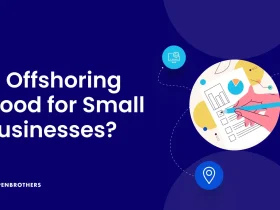Private funds are investment funds that collect money from a number of different investors to invest in private assets like property, private equity, and debt markets. Unlike stocks or bonds on the open market, these funds are managed by professionals who seek to gain more-than-average returns by making smart investments. Since private funds do not occupy the same regulatory space as publicly traded assets, they have more freedom, and the fund managers can take advantage of opportunities that might elude other investors.
The biggest reason why private funds yield 8-12% is that they invest in higher-returning markets that are risk-adjusted. These markets would include growth-stage companies, distressed assets, and private lending. Private fund investors get exposure to non-public deals, and the fund managers leverage their network and experience to maximize returns. Investing in private funds is a long-term game. Unlike relatively liquid stock, private fund investments carry lock-ins of several years. Despite this, private fund investments remain a reasonable deal for investors who seek returns that are stable and consistent.
How to Evaluate a Private Fund Before Investing?
Before committing capital to a private fund, it’s crucial to perform due diligence. Start by examining the fund’s historical performance—look at its track record over multiple market cycles to understand how it performs during both upswings and downturns. Consistency in returns is key, as some funds may show high returns in strong markets but struggle during economic slowdowns. Investors should also compare different funds, such as LBC Capital, to analyze how they manage risks and generate consistent returns over time.
The experience and skills of the manager are also an important factor. The success of private funds is highly dependent on those who manage them. Study their history, investment philosophy, and past performance. A mature manager with good business contacts and a robust strategy improves the chances of good returns. LBC Capital, for example, makes strategic investments that give equal risk and return, generating secure returns to the investors.
Fees and charges must be reviewed, too. Unlike ETFs or mutual funds, private funds come with management and performance fees that can cut into earnings. There must be transparency—shun those whose charges are shrouded or have cunning structures. Make sure also that the fund is in your risk category and investment period, since private investments are long-term endeavors that require waiting.
The Role of Relationships in Private Fund Investing
Relationships are everything when it comes to private fund investing. In contrast to the stock market, in which it can be accessed by pushing a button, entry into private funds is based mostly on networking and swagger. Most top-performing private funds are on an invitation-only basis, and investors need to have close relationships to receive access. Having a strong network is not merely a question of access but also gives investors access to valuable information, counsel, and the ability to co-invest in high-value transactions that might not be made available to the public.
Fund managers invite experienced investors who are familiar with long-term investment horizons and can commit funds without needing to redeem their money too frequently. Likewise, investors must ally themselves with fund managers, industry experts, and fellow investors in order to obtain access to the highest-returning offerings. Enrolling as a member of investor groups, attending financial network meetings, and taking advantage of social ties can provide access to pay-high-returns investment products. Active investors who belong to financial communities and are aware of industry developments are likely to receive early information on quality investment opportunities.
Good relationships also facilitate better communications and transparency among fund managers and investors. Investors with good relationships with fund managers will likely enjoy better access to fund strategies, potential risks, and potential future investment opportunities. Transparency allows investors to make sound decisions and remain abreast of market trends, leading to higher long-term returns.
Mitigating Risks When Investing in Private Funds
Every investment carries risk, and private funds are no exception. However, there are strategies to mitigate these risks. Diversification is one of the most effective ways to reduce exposure—by investing in multiple funds across different asset classes, sectors, or geographies, investors can minimize losses if one investment underperforms. Additionally, investors should assess the fund’s strategy, management team, and risk profile before committing capital.
Another key factor is understanding liquidity constraints. Unlike stocks or ETFs, which can be sold anytime, private funds often have strict lock-up periods. Before investing, assess whether you can commit capital for several years without needing immediate access. Reading the fine print is essential—understand how capital calls, distributions, and exit strategies work to avoid surprises. Key steps to mitigate risks when investing in private funds:
- Diversify your investments to avoid overexposure to a single fund or asset class.
- Review the fund’s track record and analyze its past performance during different market conditions.
- Assess liquidity terms to ensure they align with your financial goals.
- Verify regulatory compliance and confirm the fund operates under a strong legal framework.
- Stay informed by regularly reviewing fund reports and engaging with fund managers.
Additionally, regulatory compliance and fund structure should be analyzed. Some funds operate under regulatory frameworks that offer investor protection, while others may have fewer safeguards. Choosing funds with strong governance and compliance policies helps reduce legal and financial risks.







Leave a Reply